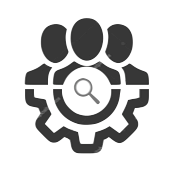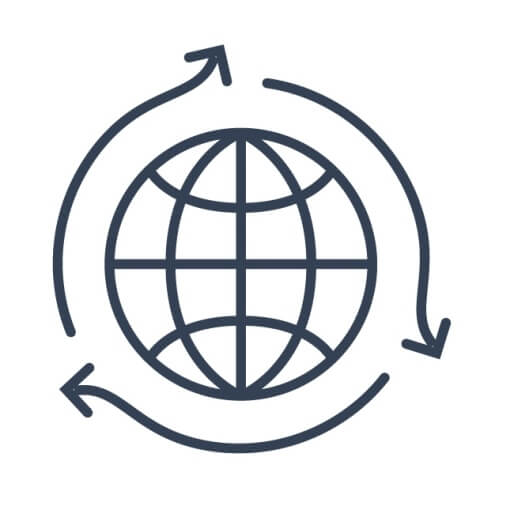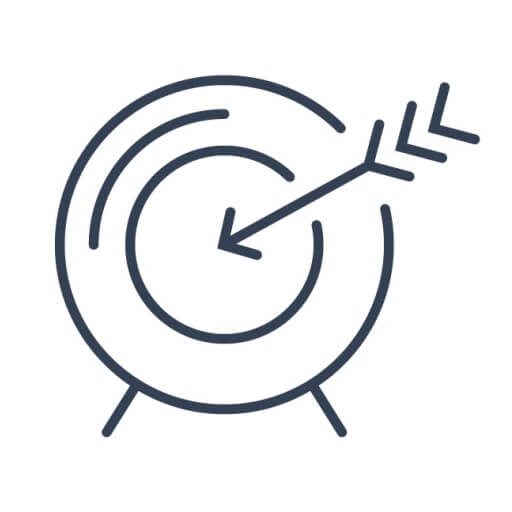A no-nonsense research-based guide to change management.
There are over 50,000 search results under Change Management books on Amazon. Organizations throw a lot of resources into managing change. According to some authors, 100% of companies consider change management a critical task.
Still, the success rate could be higher. More than 70% of change initiatives still fail. One of the possible reasons might be using wrong theories or models, or lack thereof.
The purpose of this article is to enlist the 20 most important change management models and theories.
Our business simulations and change management programs are based on most of the following models.
1. What causes change?
1.1 How organizations react to environmental changes.
Anticipating Strategic Decay (Hamel and Välikangas)
This model states that all organizational strategies decay in four main ways. Through replication (strategy being copied), supplantation (becoming irrelevant), exhaustion (reaching a point of saturation), and evisceration (customers gaining bargaining power.
Interactive planning (Russell Aickoff)
This theory was developed by one of the pioneers of system thinking. He outlines four attitudes in planning.
Reactive. Focused on the past, trying to return to the “good old days.”
Inactive. Trying to preserve the present, which is, in essence, resistance to change.
Proactive. Try to predict the future and take advantage of such predictions if correct.
Proactive. Create the future. This focuses on the past, present and future. The focus is on shaping the future.
1.2 Life-Cycle models
The Cycle of Civilizations (Arnold Toynbee)
Authors have always searched for some cycle repetition in history. Arnold Toynbee’s 12-volume research that studied 23 civilizations outlines the lifecycles of civilizations – from Genesis and Growth to Breakdown and Disintegration.
The Five Phases of Growth (Larry Greiner)
Defines the five growth phases and outlines how systems, management focus, and structure should adapt during each of those.
The stages are: 1. Make and sell; 2. Efficiency; 3. Expansion of markets; 4. Consolidation; 5. Problem-solving and innovation.
Barbarians to Bureaucrats (Lawrence Miller)
It builds on the Toynbee but adapts it to the corporate world. Defines seven stages and leadership styles – Prophet, Barbarian, Builder and Explorer, Administrator, Bureaucrat, Aristocrat and Synergist.
2. Barriers to change and resistance
Cognitive dissonance (Leon Festinger)
This theory is one of the milestones of cognitive psychology and explains why people resist change when they perceive it as unpleasant.
Bounded rationality (Herbert A. Simon)
This theory by the Nobel prize winner explains why, instead of trying to make the “best” choices, we often settle for “good enough,” satisfactory choices. The reason is our limited mental capacity to analyze all information.
The Field Theory of Lewin (Kurt Lewin)
Lewin is considered the forefather of modern social psychology. He defines two forces that determine the fate of change. Driving forces – are those that push change, and restraining forces – are those who oppose change.
The Hidden Traps in Decision-Making (Hammond, Keeney and Raiffa)
Outline the six heuristics in decision-making that might prevent us from making the best decision. Those are anchoring, status quo, sunk-cost, confirming evidence, framing, estimating, and forecasting.
Thinking, Fast and Slow (Daniel Kahneman)
The previous six heuristic model is also based on the work of Nobel prize winner Daniel Kahneman. His work Thinking, Fast and Slow is also a great model for change. The main idea is that we people have two circuits of thinking. System 1 is fast, intuitive, and emotional, thus saving energy and automating activities. System 2 is slow, logical, and more deliberate.
Lewin, K. (1951). Field theory in social science. New York: Harper.
Miller, L. (1989). Barbarians to bureaucrats: corporate life cycle strategies: lessons from the rise and fall of civilizations. Choice Reviews Online, 27(02).
Schein, E. H. (2016). Organizational culture and leadership. John Wiley & Sons.
Senge, P. M. (1990). The fifth discipline: The Art and Practice of the Learning Organization. Doubleday.
Simon, H. A. (1982). Models of bounded rationality Bd. 1 and 2. Cambridge: MIT Press.
3. Managing successful change and processes
The formula for change (David Gleicher )
C = A × B × D > X
C is change; A is the status quo dissatisfaction; B is a desired clear state; D is practical steps to the desired state; X is the cost of the change.
Unfreezing, Change, Freezing (Kurt Lewin)
Proposes that change is not always happening, but instead, there are periods when change is facilitated (Unfreezing), when the change is happening (Change), and when change sticks (Refreezing).
Three phases of change (William Bridges)
Defines three phases: Ending what currently is, the neutral zone, and the new beginning.
The Judson Five Phases change model (Judson, 1991)
The Judson model of implementing a change is comprised of five phases: 1. analyzing and planning the change; 2. communicating the change; 3. gaining acceptance of new behaviors; 4. changing from the status quo to a desired state; and 5. consolidating and institutionalizing the new state.
The Kotter eight stages model (Kotter, 1995)
Considered one of the most influential experts in change management, Kotter’s model has eight stages:
- Create a Sense of Urgency.
- Build a Guiding Coalition.
- Form a Strategic Vision and Initiatives.
- Enlist a Volunteer Army.
- Enable Action by Removing Barriers.
- Generate Short-Term Wins.
- Sustain Acceleration.
- Institute Change
Galpin’s change wheel (Galpin, 1996)
The steps for Galpin’s wheel are: Establish the Need for Change, Develop and Disseminate the Vision for the Change, Diagnose/Analyze the Current Situation, Generate Recommendations, Detail Recommendations, Pilot Test Recommendations, Prepare Recommendations for Rollout, Rollout Changes, Measure, Reinforce, and Refine Changes.
Armenakis influence strategies (Armenakis, 1999)
Influence strategies are helpful for transmitting change messages. Those include:
– persuasive communication (e.g., speeches by change agents and articles in employee newsletters);
– active participation by those affected (e.g., participative decision-making);
– human resource management practices (e.g., selection, performance appraisal, compensation, and training and development programs);
– symbolic activities (e.g., rites and ceremonies);
– diffusion practices (e.g., best practice programs and transition teams);
– management of internal and external information; and
– formal activities that demonstrate support for change initiatives (e.g., new organizational structures).
PROSCI’s ADKAR model
ADKAR is an acronym that represents the five building blocks of successful change for an individual: Awareness of the need for change, Desire to participate and support the change, Knowledge of what to do during and after the change, Ability to realize or implement the change as required, Reinforcement to ensure the results of a change continue.
System Thinking and Organizational Learning (Senge, 1990)
Senge shares several perceived deleterious habits or mindsets called “learning disabilities .”He proposes five disciplines to become a “learning organization”:
1. Personal mastery
2. Mental models
3. Shared vision
4. Team Learning
5. System thinking, which integrates the previous four.
4. Organizational culture
The culture triangle (Schein, 1985)
According to Schein, culture is the most difficult organizational attribute to change. It might even outlast products and leadership. Schein proposes organizational culture can be analyzed on three levels.
Artifacts. This includes architecture, technology, office layout, dress code, and behaviour patterns.
Values. The reasons why members behave as they do in an organization.
Underlying Assumptions. An unconscious pattern that determines how group members perceive, think, and feel.
Sources
Ackoff, R.L. 1999. Re-Creating the Corporation – A Design of Organizations for the 21st Century. Oxford University Press. New York, NY.
Armenakis, A., Harris, S., & Feild, H. 1999. Paradigms in organizational change: Change agent and change target perspectives. In R. Golembiewski (Ed.), Handbook of organizational behavior. New York: Marcel Dekker.
Beckhard, R. (1975). “Strategies for large system change”. Sloan Management Review. 16 (2): 43–55.
Bridges, W., & Bridges, S. (2017). Managing Transitions, 25th-anniversary edition: Making the Most of Change. Da Capo Lifelong Books.
Ewenstein, B., Smith, W., & Sologar, A. (2015, July 1). Changing change management. McKinsey & Company. https://www.mckinsey.com/featured-insights/leadership/changing-change-management
Festinger, L. (1957). A theory of cognitive dissonance. Stanford University Press.
Galpin, T. 1996. The human side of change: A practical guide to organization redesign. San Francisco: Jossey-Bass.
Greiner, L. E. (1972). Evolution and revolution as organizations grow. HBR, 1972(July/Aug.), 46.
Hamel, G., & Välikangas, L. (2004). Das Streben nach Erneuerung. Change Management, Harvard Business Manager Edition, 4, 7–21.
Hammond, John & Keeney, Ralph & Raiffa, Howard. (1998). The Hidden Traps in Decision Making. Clinical laboratory management review: official publication of the Clinical Laboratory Management Association / CLMA. 13. 39-47.
Judson, A. 1991. Changing behavior in organizations: Minimizing resistance to change. Cambridge, MA: Basil Blackwell.
Kotter, J. 1995. Leading change: Why transformation efforts fail. Harvard Business Review, 73 (2): 59–67.
Lewin, K. (1951). Field theory in social science. New York: Harper.
Miller, L. (1989). Barbarians to bureaucrats: corporate life cycle strategies: lessons from the rise and fall of civilizations. Choice Reviews Online, 27(02).
Schein, E. H. (2016). Organizational culture and leadership. John Wiley & Sons.
Senge, P. M. (1990). The fifth discipline: The Art and Practice of the Learning Organization. Doubleday.
Simon, H. A. (1982). Models of bounded rationality Bd. 1 and 2. Cambridge: MIT Press.





